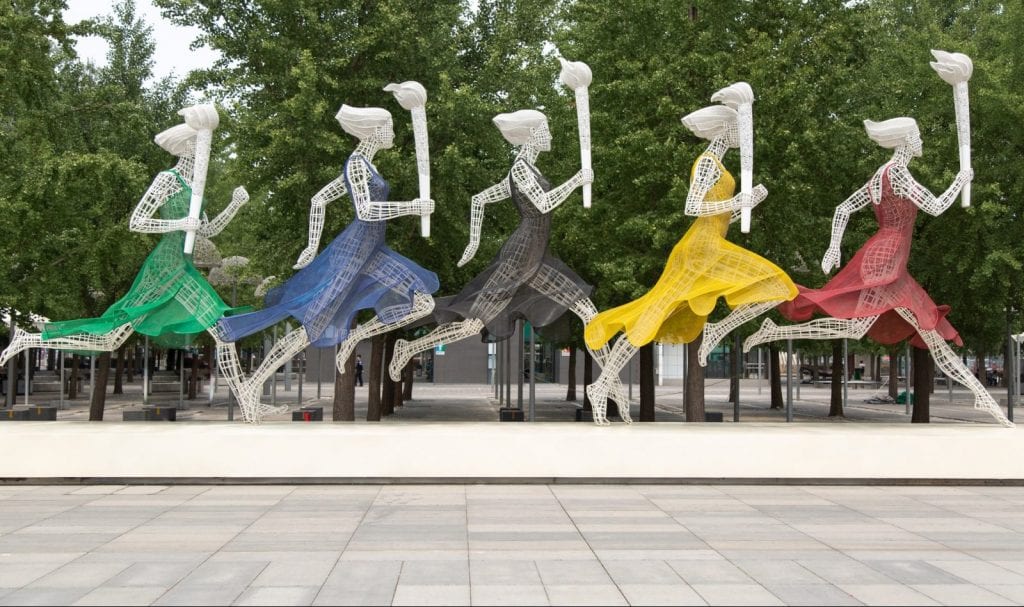“If you want sustainable clothes, focus on the farms.” That is what science-focused publication Popular Science declared this past fall, reflecting on the rise in regenerative farming, or farming practices that “restore soil biodiversity, which promotes natural carbon storage, among other benefits.” Gaining traction among a number of players in the fashion space, the latest headline-making effort on this front comes by way of HRH The Prince of Wales’s Sustainable Markets Initiative Fashion Task Force, which revealed a Manifesto for Regenerative Fashion on Wednesday in conjunction with the Circular Bioeconomy Alliance as led by scientist Marc Palahi.
In signing on to the newly-unveiled Manifesto, Task Force members – which include management from brands like Burberry, Giorgio Armani, Moda Operandi, Selfridges, Vestiaire Collective, and Zalando, among others – “are committing their brands, which are amongst the biggest names in the fashion industry, to a progressive shift towards Regenerative Fashion – a circular biobased industry that is inclusive, climate and nature-positive, using newly created or restored regenerative landscapes as the basis for circular bioeconomy value chains,” the group stated.
According to the Task Force, regenerative fashion landscapes can be created by: (1) Supporting interdependent ecosystems and land uses, such as protected primary forests, pastures, agroforestry systems, regenerative agriculture, and sustainably managed forests that provide for a diversity of biobased textile materials, such as organic cotton, sustainable wood-fibers, wool, leather, cashmere, and silk, while delivering crucial ecosystem services links to water, food, energy, carbon sequestration and biodiversity; (2) Empowering local and indigenous communities to design, manage and benefit in a fair way from the ecosystem services and the fashion value chains rooted in their landscapes; and (3) Implementing practices that shift from high-external input dependent industrial farming towards integrated ecologically-based systems that enhance biodiversity and improve the carbon and water cycles by optimizing human-animal-plant interactions that minimize soil disturbances, increase plant diversity, and enrich soil nutrients.
Specifically, the first project to fall under the Fashion Task Force’s Regenerative Fashion endeavor, which aims to regenerate land and resources in critical fashion industry sourcing locales, comes by way of the Himalayan Regenerative Fashion Living, a project that seeks to “demonstrate the potential of regenerative fashion to restore harmony between local communities, nature, and the environment while creating sustainable fashion value chains.” (Himalayan nettle, which is one of the longest fibers currently known and considered to be finer, stronger and more elastic than linen, is among one of the key exports from the region for fashion brands, with wild Himalayan nettle fibers being used by brands, such as Pangaia, to manufacture their wares.)
“The Himalayan initiative is a €1 million project that will restore degraded landscapes and recover traditional textile craft skills in order to enhance the local cashmere, cotton and silk economies while addressing global challenges related to climate change and biodiversity loss,” the Task Force announced on Wednesday, noting that work on the project will begin in May 2022 with help on the ground from Reforest Action and the Balipara Foundation.
Addressing the launch of the Regenerative Fashion Manifesto, Fashion Task Force Chair Federico Marchetti characterized it as “another concrete step towards creating a much more sustainable fashion industry. It is not simply empty words, the manifesto comes with a concrete €1 million project for the degraded landscapes of the Himalayas [that] will serve as a blue-print for what can be done to shift the fashion industry towards a more equitable, nature positive future.”
As for the impact that regenerative farming can have in helping to clean up the significant footprint created by the fashion industry, it is essential that initiatives on this front come hand-in-hand with larger efforts to address “the dilemma of constantly buying new things, [which] is a problem that needs to be dealt with urgently,” according to Theresa Lieb, an analyst at GreenBiz. This is presumably why the Task Force has paired its regenerative farming venture with its previously-announced Digital ID initiative, which the group says “allows key players in the fashion value chain – including manufacturers, brands, retailers, resellers and recyclers – to provide unprecedented transparency and traceability of the products they sell.”
One of the ultimate goals of the Digital ID is that it “unlocks new circular services for customers, such as care and repair services, as well as ones focused on resale and recycling” to extend the shelf life of fashion items – and ideally, chip away at the industry’s well-established cycle of promoting the high-volume turnover – and subsequent discarding – of garments and accessories.











